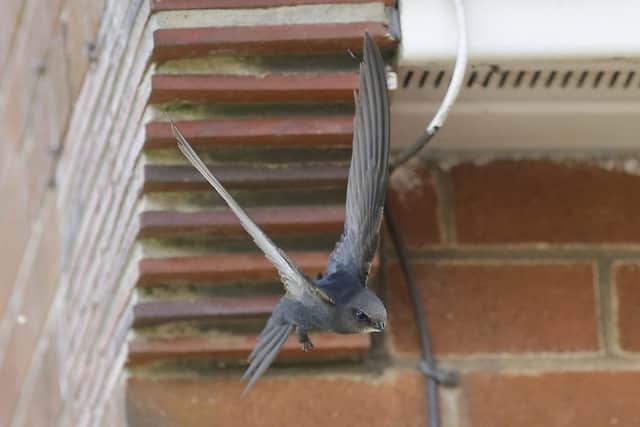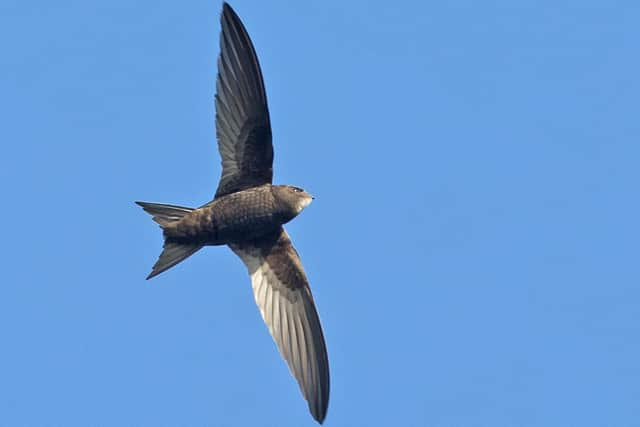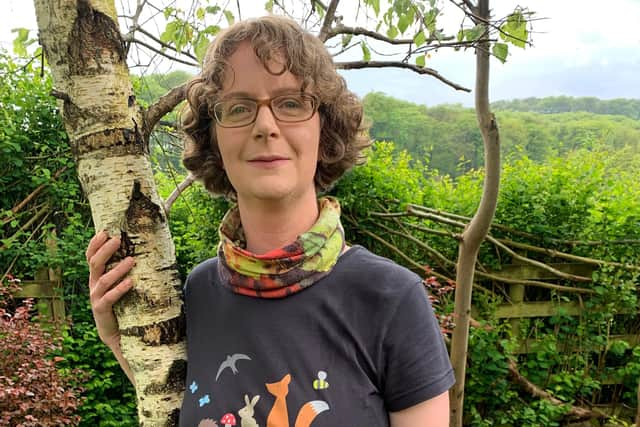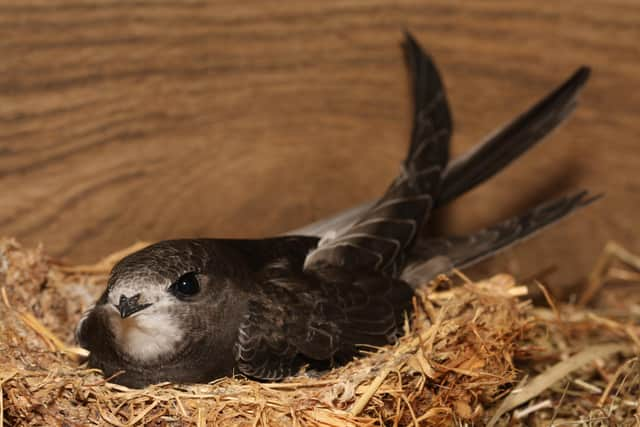Survey project finds endangered bird species flocking to Buxton nesting sites
and live on Freeview channel 276
The two-year survey of swift nests has already revealed Buxton has the largest recorded number of sites in the county, despite only being the eighth largest community.
Working with the Derbyshire Swift Conservation Project (DSCP), BCA members have spent hours standing on Buxton’s streets staring at buildings to spot the birds, which flash in and out of their nests as fast as their name suggests.
Advertisement
Hide AdAdvertisement
Hide AdBCA biodiversity trustee Lindsey Wakefield said: “Swifts rely on our buildings to raise their young. Our homes are their homes, and in many houses they are secret guests. They fly in and out so quickly and make so little mess they often go unnoticed.”


Swifts, which have long scythe-shaped wings, come to the UK from sub-Saharan Africa to breed for three months each year.
Having seen a 62 per cent drop in numbers since 1995, they are now red-listed as an endangered species.
Lindsey, who has a background in environmental science but works as a landscape painter, has been fascinated by the birds since her childhood in Fairfield.
Advertisement
Hide AdShe said: “Every street seemed to have a swift colony. I remember summer evenings, lying on a beanbag in my backyard, watching huge numbers of swifts swirling high up.”
Advertisement
Hide Ad

Local residents of today might have been a bit surprised to find Lindsey, her son Rowan, BCA colleague Simon Fussell and other surveyors hovering around their properties but when they discovered their purpose many were keen to know more.
Altogether this year, the team confirmed 87 nest sites on 75 different properties, including 17 on New High Street and 11 on Rock Bank in Harpur Hill.
Other popular neighbourhoods include Haslin Road, Hartington Road, Compton Road and Green Lane, Kents Bank and Crowestones, Hogshaw Villas, Nunsfield, Victoria Park Road and the Duke’s Drive railway viaduct.
Advertisement
Hide AdAndy Broadhurst, of DSCP, said: “Conservation relies on being able to protect existing nest sites and this can only happen if they are identified and recorded.


“Armed with these vital data, BCA can now implement measures to protect this much-loved species, ensuring that Buxton residents and visitors will enjoy the presence of this iconic species for the foreseeable future.”
Advertisement
Hide AdIt is illegal in England to disturb a swift nest but nesting sites are not protected, unlike in the Netherlands where the law forbids blocking up entry holes.
Loss of nesting sites due to building renovation is a major reason for the species’ decline in the UK, and BCA hopes the survey can encourage more property owners and neighbourhoods to welcome feathered friends.
Advertisement
Hide AdOne simple way to support nesting is to add a “swift brick” into the fabric of any new-build house. The maintenance-free hollow blocks are also used by other endangered species including house sparrows and house martins.


BCA hopes to persuade High Peak Borough Council to include the proposal in its 2025 Local Plan, the blueprint for development in the area.
Lindsey said: “There isn’t a national policy yet to make swift bricks mandatory in new buildings, but there is consensus throughout the country that it is the easiest and most cost-effective method of securing a future for swifts.”